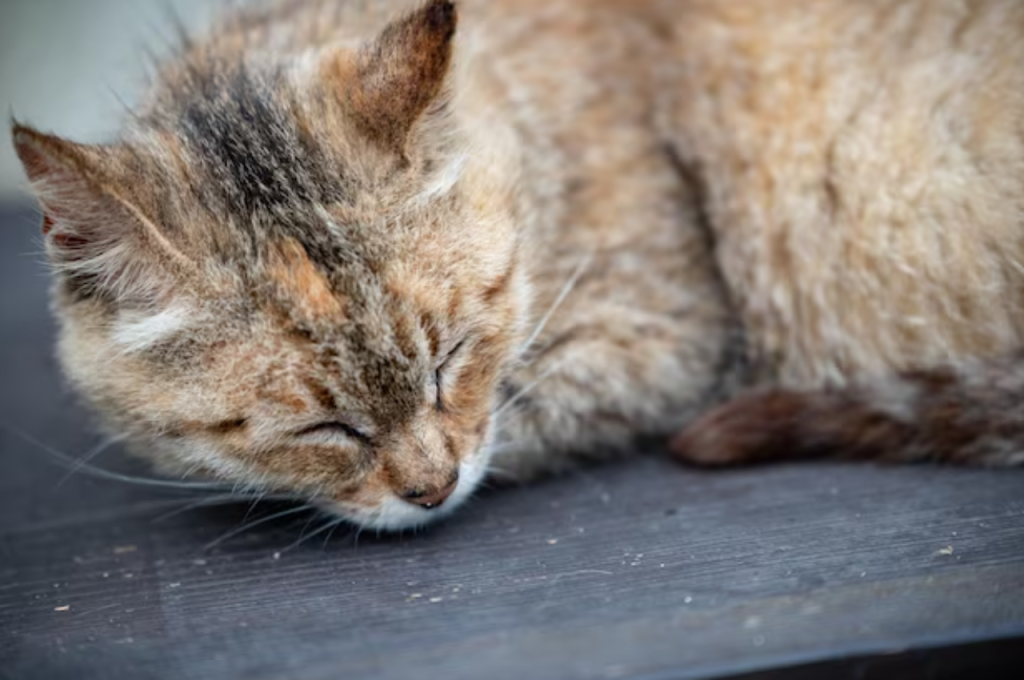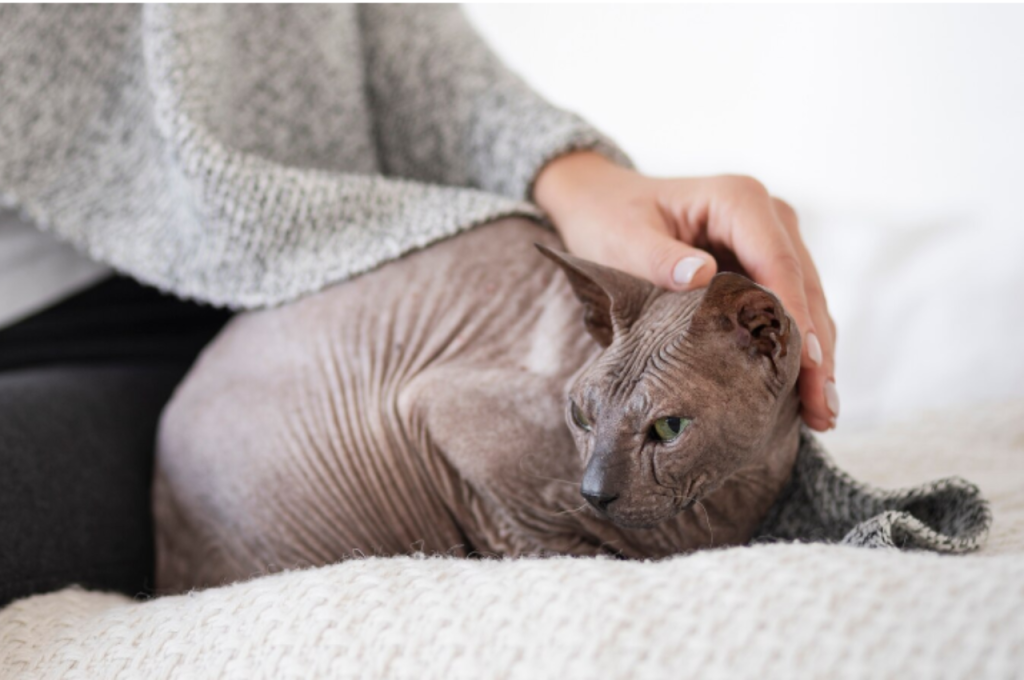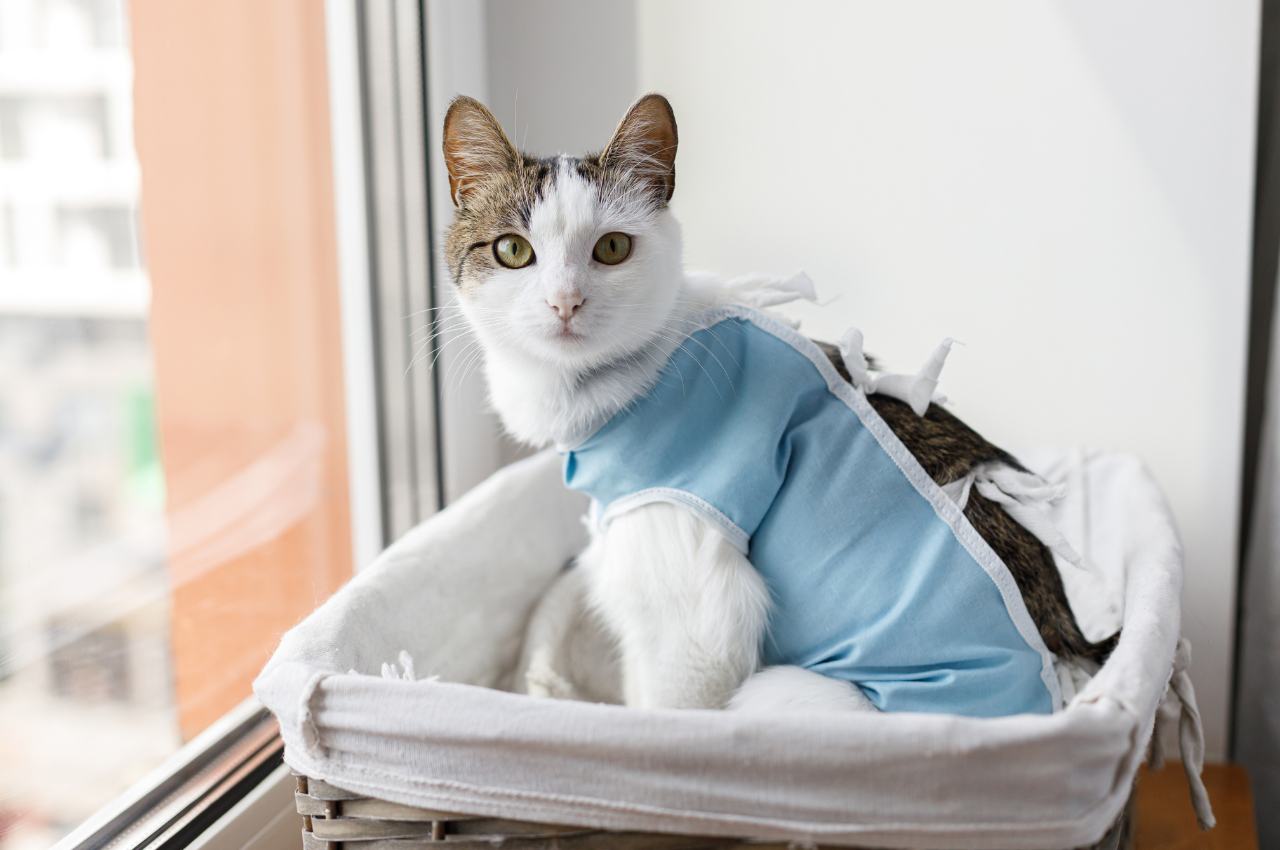To comfort a cat in pain, provide a quiet and comfortable space for them to rest, and offer gentle physical and emotional support. Cats can experience pain due to various reasons, such as injuries, illness, or old age.
As pet owners, it is our responsibility to provide them with the necessary care and comfort during these difficult times. Comforting a cat in pain requires a delicate approach and understanding of their needs. In this blog post, we will explore some effective ways to help alleviate a cat’s discomfort and provide them with the support they require. By following these guidelines, you can ensure that your feline companion feels secure and loved, even in moments of pain and distress.
Recognizing Pain in Cats
Cats are masters at masking pain, making it challenging for pet owners to recognize when their feline friend is suffering. Understanding the subtle cues that indicate discomfort is crucial for providing timely relief and care. By paying close attention to physical signs and behavioral changes, you can learn to recognize when your cat is in pain.

Physical Signs
Physical signs of pain in cats may include limping, difficulty jumping, decreased grooming, abnormal posture, and changes in appetite. Vocalization, such as excessive meowing or groaning, can also indicate pain. Altered breathing patterns and sensitivity to touch may further suggest discomfort.
Behavioral Changes
Behavioral changes can serve as crucial indicators of pain in cats. Look for increased aggression, withdrawal, or uncharacteristic hiding. Changes in sleep patterns or restlessness may also signal discomfort. Lack of interest in play and avoidance of interaction are additional behavioral cues to watch for.
Immediate Comfort Measures
Creating a Safe Space
Find a quiet, secluded area for your cat to rest. Use a cozy bed or blanket to create a comfortable spot away from noise and activity.
Gentle Handling Techniques
Handle your cat gently and with care. Avoid putting pressure on the painful areas and provide support when lifting or moving your cat.
Pain Relief Through Nutrition
Cats in pain can benefit from a holistic approach to care, including pain relief through nutrition. By focusing on providing anti-inflammatory foods and ensuring proper hydration, you can help alleviate your cat’s discomfort and support their overall well-being.
Anti-inflammatory Foods
When it comes to alleviating a cat’s pain, incorporating anti-inflammatory foods into their diet can make a significant difference. Some beneficial options include:
- Fatty fish such as salmon and mackerel
- Turmeric, known for its natural anti-inflammatory properties
- Berries like blueberries and raspberries
- Green leafy vegetables such as spinach and kale
Hydration Tips
Proper hydration is crucial for pain relief and overall health. It’s important to ensure your cat has access to fresh water at all times. You can also increase their moisture intake by offering wet food or using a pet fountain to encourage drinking.
Soothing with Touch
To comfort a cat in pain, you can try soothing with touch. Gentle strokes and massages can help to ease their discomfort and provide a calming effect. Be sure to approach your cat slowly and carefully, and pay attention to their reactions to ensure they are comfortable and not in further pain.
The Power of Petting
Soothing a cat in pain can be done effectively through touch. Petting your cat is an excellent way to provide comfort and relaxation. The power of petting lies in the physical contact that it provides. The warmth and pressure of your touch can help alleviate pain and discomfort. It also provides a sense of security and comfort to your cat. However, it’s essential to approach your cat in a gentle and soothing manner to avoid causing any further pain.
Massage Techniques
Massage is another way to provide comfort to a cat in pain. Massage techniques can help reduce tension in the muscles and promote relaxation. Some of the massage techniques that you can use include kneading, stroking, and circular motions. Before starting the massage, ensure that your cat is comfortable and relaxed. Start with gentle and slow movements, and gradually increase the pressure as your cat becomes more comfortable.

| Massage Techniques | Benefits |
| Kneading | Helps to improve circulation and reduce muscle tension |
| Stroking | Promotes relaxation and reduces anxiety |
| Circular motions | Helps to relieve muscle knots and tension |
Massage can be done for a few minutes each day to provide your cat with relief. Always be mindful of your cat’s body language, as they will let you know if they are uncomfortable or in pain. If your cat appears to be in pain or discomfort, stop the massage immediately and seek veterinary care. Soothing a cat in pain with touch requires patience and sensitivity. Always approach your cat in a gentle and calm manner, and take your time to understand their body language and needs. With the right techniques and approach, you can help provide your cat with relief and comfort during their time of need.
Environmental Adjustments
Environmental adjustments play a crucial role in providing comfort to a cat in pain. By creating a stress-free environment and making necessary accessibility modifications, you can help your feline companion feel more at ease and reduce their discomfort.
Stress-free Surroundings
Creating a peaceful space with minimal noise and distractions can significantly help alleviate your cat’s stress and pain levels.
Accessibility Modifications
Ensuring that your cat’s essential items such as food, water, litter box, and resting areas are easily accessible can greatly enhance their comfort during this challenging time.
Using Play and Distraction
Ease your cat’s pain by utilizing play and distraction techniques. Engage them with interactive toys or gentle petting to provide comfort and relief during difficult times.
Using Play and Distraction is an effective way to comfort a cat in pain. When a cat is in pain, it may become stressed and anxious. Play and distraction can help ease their discomfort and keep them relaxed. Interactive toys and calm activities are two effective ways to provide play and distraction for your feline friend.
Interactive Toys
Interactive toys are a great way to engage your cat in playtime. They not only provide a fun distraction, but they also stimulate your cat’s mind and keep them active. Some popular interactive toys for cats include:
| Ball tracks | Feather wands | Puzzle feeders |
| Chaser toys | Catnip toys | Laser pointers |
Try out different toys to see which ones your cat enjoys the most. Remember to supervise playtime to ensure your cat doesn’t overexert themselves and make their pain worse.
Calm Activities
Calm activities are another effective way to provide play and distraction for your cat. These activities help your cat relax and reduce their stress levels. Some popular calm activities for cats include:
- Massage therapy
- Soft music or white noise
- Grooming sessions
- Low-key playtime
- Snuggle sessions
By engaging in these calm activities, your cat will feel more comfortable and at ease. It’s important to listen to your cat’s cues and understand when they need a break from playtime or any activity. Providing a comfortable and safe environment for your cat will help them heal and feel better in no time. Remember, play and distraction can be a great way to comfort your cat in pain. Using interactive toys and calm activities will help reduce their stress levels and provide a fun distraction. By understanding your cat’s needs and preferences, you can provide the best care possible for your feline friend.
Professional Care and Medication
To comfort a cat in pain, professional care and medication are crucial. It’s important to observe any changes in behavior and seek veterinary attention immediately. Pain management can include medication, environmental adjustments, and alternative therapies. When your cat is in pain, professional care and medication are essential. Seek veterinary assistance for proper diagnosis and treatment.
When to See a Vet
If your cat shows signs of distress or discomfort, consult a vet immediately. Early intervention is crucial for their well-being.
Understanding Prescription Painkillers
Prescription painkillers are necessary for managing your cat’s pain. Follow vet instructions for safe and effective usage.
Monitoring and Ongoing Support
To comfort a cat in pain, monitoring, and ongoing support are crucial. Observe your cat’s behavior closely, looking for signs like hiding, vocalizing, or changes in appetite, which may indicate discomfort. Create a calm and stress-free environment by minimizing noise and disruptions. Provide soft bedding and easy access to food and water to make your cat more comfortable. Gentle petting and talking in soothing tones can also help, but be mindful not to touch any areas that may be painful.

Regularly consult your veterinarian for pain management options, such as medications or therapies tailored to your cat’s condition, ensuring ongoing support throughout the recovery or care process.
Keeping a Pain Diary
Keeping a pain diary for your cat can be an invaluable tool in monitoring their discomfort and providing ongoing support. When you notice signs of pain, such as changes in behavior, reduced appetite, or unusual vocalizations, note them down with the date and time. Document any triggers, the severity of the symptoms, and how your cat responds to comforting techniques or medication. This detailed record helps you and your vet track patterns, identify the effectiveness of treatments, and adjust care plans accordingly. By closely observing and recording your cat’s condition, you ensure they receive the best possible comfort and support during painful episodes.
Adjusting Care as Needed
When comforting a cat in pain, it’s crucial to monitor their behavior closely and adjust your care as needed. Ensure your cat has a quiet, comfortable space to rest, away from any noise or stress. Provide soft bedding and make sure food and water are easily accessible.
Avoid unnecessary handling or movement, as this can increase discomfort. Speak in soothing tones and offer gentle affection, but respect their signals if they prefer to be left alone. If pain persists or worsens, consult with a veterinarian for appropriate pain management and ongoing support. Regular monitoring will help you identify any changes in behavior or health, allowing you to adjust your care to better meet your cat’s needs.
Conclusion
In caring for a cat in pain, remember to provide gentle comfort and support. Understanding their needs is key to easing their distress. By creating a calm environment and showing patience, you can help your feline friend feel better. Your furry companion will appreciate your care and love.
